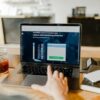During the global pandemic, governments and educational institutions we reforced to implement online education to abide by distance laws. However, as most countries return to in-person teaching, experts study the benefits of improving online education and the use of ICTs in both environments.
Traditionally, online learning was only viewed as a viable alternative for people who could not access a campus easily, especially adults seeking further education. Examples of this are the broad offer of online postgraduate programs and universities like TECH Technological University. Meanwhile, elementary and secondary is still mostly in person.
But with the long isolation periods around the world, schools had to find ways to continue functioning, that is when the use of ICTs became the norm. This does not mean they are not using before it just means they became mainstream. In this article, we explore some uses of ICTs in education and their future.
The use of ICTs in classrooms
ICTs or information and communication technologies are, at their most basic level, the integration of communication and technology to access, store, transmit, understand and manipulate information. With this in mind, they have been around for decades, even the first telephone networks, according to their use, could be understood as an ICT.
However, the most common use of ICTs in education environments is Blackboard. This is nothing but an information management software where teachers and students can find their assignments, scores, and other related matters in one space. Despite it being beneficial in terms of organization, other tools have proved to be far more effective in helping the learning process.
One of the prevailing issues with online learning is the loneliness some students and even teachers can feel. Nevertheless, with ICTS, there may have been a way around it. Forums and blogs can allow students to connect with their peers and teachers, not only that, but they generate discussions that help to absorb the information and interpret it critically.
Video games are also a clever use of technology in education, specifically for the youngest students who have not developed the patience and concentration a virtual lecture requires. Educational video games are incredibly engaging and, depending on the game, they can also encourage team work even from home.
Other teachers have opted for making content on YouTube or other video platforms for their classes. It helps students to manage their time and learn at their own pace. They can watch it at any time or repeat it. This tool can be used in in-person classes too, as it can reinforce already given out information.
ICTs help make learning an interactive experience, explore new pedagogical methods, and adapt to most learning styles. With the rapid pace of technology, ICTs likely improves. However, in-person classes have to take advantage of them too.
Furthermore, what the last two years have shown us is that online learning is not for everybody, but traditional education isn’t either. A healthy balance between the two and the ability to choose according to the personal experiences of each student can guarantee a safe and productive learning environment for all ages and levels in education.






